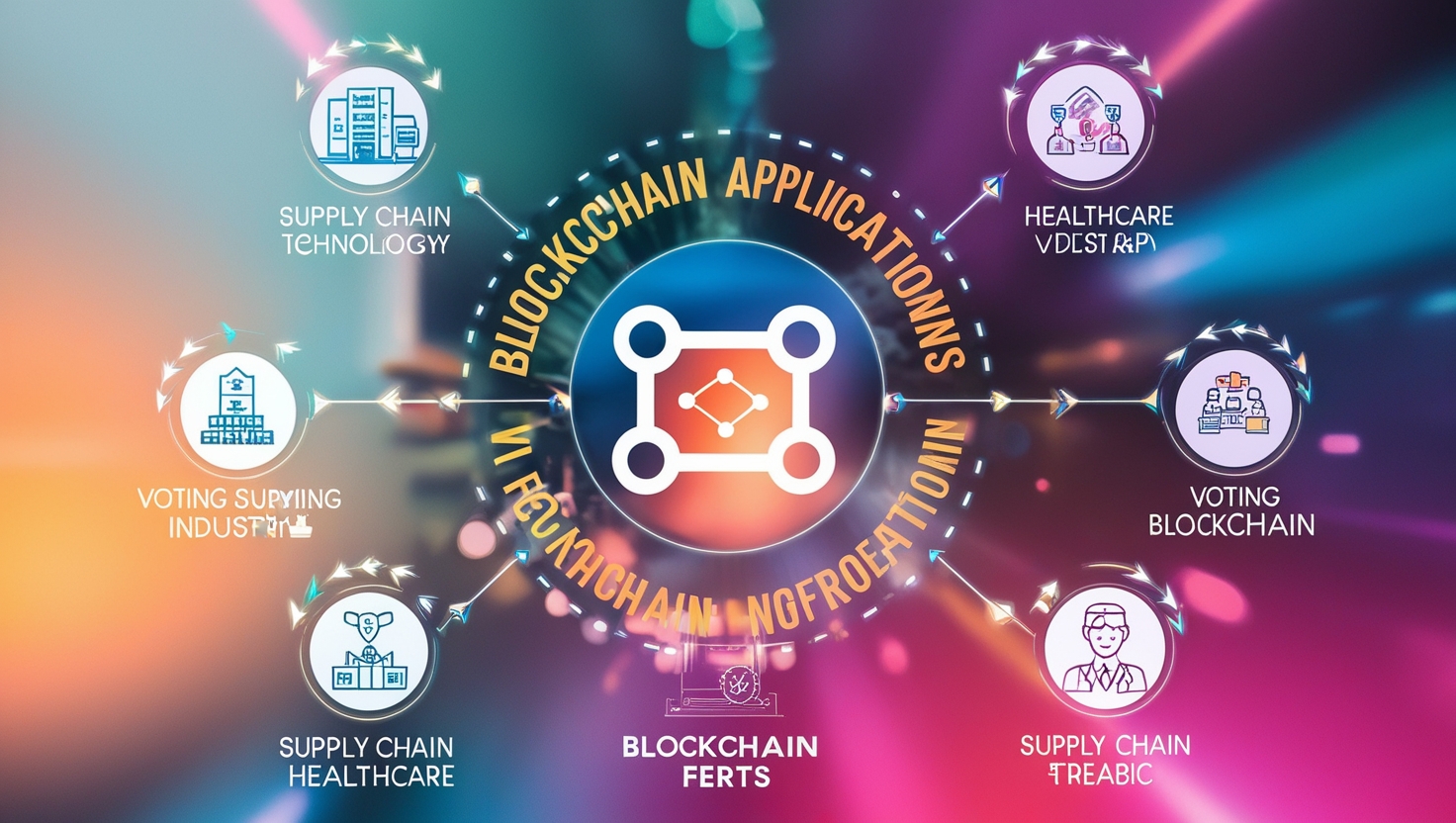Table of Contents
ToggleIntroduction
In the world we live in now, filled with digital advancements, the idea of a decentralized blockchain network is really changing our views on data and how transactions are done. Think of a blockchain as a kind of digital notebook that’s spread out over lots of computers all around. This isn’t like the usual databases we know about; those can be easy targets because they’re all in one place. But with a decentralized blockchain, it’s different because everyone involved gets to keep their own copy of this notebook, making things more secure and open for everyone to see.
Key Highlights
- Blockchain is a secure and transparent way to digitally record information and transactions, making it nearly impossible to alter.
- This technology allows data to be stored across a network of computers rather than in one central location, resulting in increased security and resilience.
- Blockchains can be used for multiple purposes besides cryptocurrency, including supply chain management, healthcare record-keeping, and voting systems.
- Smart contracts built on blockchains can automate processes, improving efficiency and reducing the need for intermediaries.
- While still an evolving technology, blockchain has the potential to revolutionize many industries by increasing transparency, security, and trust.
What is Blockchain Technology
Imagine blockchain technology as a digital diary that’s copied onto lots of computers all over the place. Every time someone makes a new transaction, it gets added to this diary as part of a “chain” – that’s why we call it “blockchain.” This chain is put together in order and locked down tight, making it super hard for anyone to mess with or change anything. That’s what makes blockchain so safe and appealing for different uses.
Definition and Core Concepts
Blockchain technology is like a new kind of ledger technology that’s spread out across many computers instead of just being in one place. This makes it really secure and everyone can see what’s going on, which isn’t how traditional databases work.
At the heart of blockchain, there are these things called “smart contracts.” They’re basically agreements written in computer code that live on the blockchain. When certain conditions are met, these contracts do their thing all by themselves without needing anyone to oversee them.This reduces the involvement of middlemen, making everything more trustworthy and seamless.
With public blockchains, such as those Bitcoin and Ethereum use, anybody can join in. You can look at transaction histories or even suggest changes to how things work. The fact that it’s open for all adds to why so many people find blockchain exciting and see lots of possibilities for using it in different areas.
How Blockchain Works: A Simplified Overview
At the core of it, a decentralized blockchain is run by a bunch of computers that all hold the same ledger. Whenever there’s a new transaction, everyone in the network hears about it.
Miners are these special parts of the network that check if transactions are legit. They use really smart math and algorithms to put together a new block full of these transactions onto the blockchain. This step is super important for keeping everything safe.
After this new block gets added on, it can’t be changed or removed which means everything stays honest and secure. This cool way of using ledger technology is what makes sure every deal made across this decentralized system is clear and trustworthy.
The Evolution of Blockchain Technology
Since blockchain started out as the tech foundation for Bitcoin, it’s really grown a lot and now does way more than just power digital money. At first, people thought it was pretty specialized stuff, but these days, blockchain is changing the game in lots of different fields.
With all sorts of new improvements happening all the time, we’ve got better ways to agree on transactions (that’s what those consensus mechanisms are about), stronger security to keep things safe, and even special platforms that are made for particular uses.
From Bitcoin to Broader Applications
Back in 2008, someone going by the name Satoshi Nakamoto shared a document that kicked off what we know as blockchain technology. This was all about introducing Bitcoin, which was pretty special because it didn’t need any central power to oversee things. Instead, it used blockchain to make sure money could move safely from person A to person B without anyone else butting in.
With Bitcoin showing everyone how useful its blockchain network could be, lots of smart folks started thinking about other ways this tech might help out. Industries like supply chain management and healthcare saw a chance to use these secure and clear transactions for their own good – making sure everything from your sneakers’ journey from factory to store or keeping medical records safe is handled better than before.
Nowadays, you’ll see the influence of blockchain way outside just financial services. It’s helping keep track of where stuff comes from, protecting health info better than ever before and even making voting more straightforward. The reach of this technology is growing every day across different corners of the world.
Key Milestones in Blockchain Development
In 2008, Satoshi Nakamoto came out with a white paper that introduced Bitcoin and the blockchain technology behind it. This was a big deal because it started conversations and got people thinking about how this new tech could change things.
With the start of Silk Road, an online market on the dark web, we saw what blockchain could do but also where there might be problems. It showed us that while you can make transactions without anyone knowing who you are, this feature might not always be used for good stuff.
Even though there were some bumps in the road at first, coming up with proof-of-work (PoW) as Bitcoin’s original consensus mechanism was a key move. PoW uses a lot of energy but it’s really good at keeping the blockchain secure and making sure all transactions are legit. This helped more people get on board and sparked even more ideas to improve things.
Types of Blockchain Explained
Blockchain technology isn’t a one-size-fits-all kind of thing. It actually has different types, each designed for specific uses and goals. With these variations, you get to choose based on how open or secure you want it to be, along with what functions you need it to perform. This is really important because knowing the differences between public, private, consortium, and hybrid blockchains can help anyone make the most out of this technology for various needs.
Public vs. Private Blockchains
Public blockchains, like the Bitcoin network, are open to everyone. They don’t have a single entity in charge because they’re totally decentralized. One of their big pluses is that anyone can see all the transactions that happen.
On the other hand, private blockchains work within just one company or group and aren’t open for everyone to join. A central authority runs them which means they decide who gets in and who doesn’t. This setup works well for companies that want more privacy and control over what happens on their blockchain.
Both kinds use blockchain technology at their core but differ mainly in who can access them and how they’re run. Public ones are all about being open and letting anyone look inside, while private ones keep things under tighter wraps with centralized control by a central authority or a single organization.

Consortium and Hybrid Blockchains
Consortium blockchains are like a team project, where instead of one person in charge, a bunch of organizations run the show. They’re super useful for things like managing supply chains because everyone involved can see and control what’s happening on this secure online ledger.
Hybrid blockchains offer the best of both worlds. They mix private and public blockchain stuff so companies can keep some information just to themselves while sharing other bits openly.
A great example is Hyperledger Fabric by the Linux Foundation. It’s where big names come together to build special blockchain tools that businesses need.
How Blockchain is Revolutionizing Industries
Blockchain technology is doing a lot more than just shaking up the finance world. It’s making things clearer, safer, and faster across different areas, changing how usual tasks are done and opening doors to new chances. With its touch on supply chain management and healthcare to reshaping how governments and voting systems work, blockchain’s effect can be seen all around the globe. This sets us on a path toward a future that’s not only more secure but also better connected.
Impact on Finance and Banking
In the world of money and banking, blockchain technology has made a big splash early on. It’s like a new kind of currency system that doesn’t need banks or other middlemen to make things work. This means people can send money across borders quickly and without it costing too much.
With blockchain, there’s also this cool thing where even if you don’t have a regular bank account, you can still get into financial services. It’s all about making loans and other helpful stuff available in a way that’s safe for everyone to see and use, which is great news for folks who usually don’t get these chances.
On the flip side, old-school banks are finding themselves at a crossroads because of blockchain. They’ve got to figure out how to keep up with these changes by trying out new ways of doing things or teaming up with others so they don’t fall behind and miss out on what blockchain has to offer.
Blockchain in Supply Chain Management
Blockchain is really shaking things up in how we manage supply chains, making everything more open, easy to follow, and efficient by keeping a safe and shared record of an item’s trip from where it starts to the customer. With the help of a distributed database, blockchain brings several benefits:
- Improved Transparency: Every step and transaction in the supply chain gets recorded on the blockchain. This means everyone who needs to know can see what’s happening.
- Enhanced Traceability: It becomes simple to check where products come from and their history. This helps fight fake goods and confirms that products are real.
- Increased Efficiency: Blockchain cuts down on paperwork and makes processes automatic. This speeds things up and reduces waiting times.
This knack for tracking items, proving they’re genuine, and making everything run smoother shows why blockchain is such a big deal in managing supply chains. It offers advantages not just for businesses but also for us as consumers.
Blockchain and Cryptocurrency
Even though blockchain technology is about a lot more than just cryptocurrencies, they’re pretty much joined at the hip. When Bitcoin showed up as the first big name in cryptocurrency land, everyone started paying attention to blockchain. It was like a lightbulb moment showing how this cool new tech could make digital money that’s both spread out and safe.
Getting why blockchain and cryptocurrency are such a tight duo helps us get the big picture of how they’ve changed things so far and what might come next. By looking into how cryptocurrencies work with blockchain under the hood, we dive deep into understanding where money and online deals could be heading thanks to these game-changing ideas.
Understanding Bitcoin and Altcoins
Bitcoin, known as the first of its kind, showed everyone what a digital currency that isn’t controlled by any central authority could look like. It works on something called a blockchain network, making it possible for people to send money directly to each other in a safe and open way without needing banks or other financial institutions.
After Bitcoin became popular, lots of other digital currencies started popping up. These are often referred to as “altcoins,” and they come with their own special features aiming to do things better or differently than Bitcoin. By using blockchain technology too, these altcoins try out new ideas or solve problems that earlier cryptocurrencies might have had.
The world of digital currencies is getting bigger all the time. From Litecoin to Ethereum and many others, there’s now a wide variety for anyone interested in exploring this space. Each one operates on the principles laid down by blockchain technology but brings something different to the table regarding benefits and drawbacks.
How Cryptocurrencies Utilize Blockchain
At the core of every digital currency, there’s a blockchain. Think of it as an open book that keeps track of all deals in a way everyone can see. This setup helps keep things safe and stops people from trying to spend their digital money more than once.
With cryptocurrencies, different ways are used to make sure transactions are legit and the network is secure. Bitcoin uses something called proof-of-work (PoW), which needs a lot of power. On the other hand, some newer currencies use what’s known as proof-of-stake (PoS). Here, folks have to lock up some of their coins if they want to help validate transactions.
But it doesn’t stop with just sending and receiving money. Thanks to blockchain technology, we also get smart contracts. These clever bits automate tricky tasks without needing middlemen, paving the way for decentralized finance (DeFi) and lots more cool stuff within this world.
Technical Foundations of Blockchain
To really get what blockchain technology is all about, we need to dive into the basics that make it tick. Things like decentralization, where there’s no single point of control; consensus mechanisms, which are ways for everyone to agree on something; and cryptographic hash functions that keep everything secure are key parts of how blockchains work. With a handle on these core ideas, we can see just how strong, open, and game-changing blockchain technology truly is.
Decentralization and Its Significance
With blockchain technology, the big game-changer is how it’s not kept in one place like traditional systems. Instead of having all the data on a central server, a decentralized blockchain spreads it out over lots of computers that talk to each other directly.
By doing things this way, there are quite a few perks. For starters, it’s safer because there isn’t just one spot hackers can attack to bring everything down. If something goes wrong with one computer (or node), the rest keep going without missing a beat which means everything keeps running smoothly. On top of that, since everyone involved can see what’s happening on the blockchain, trust and openness get a big boost.
When we take away the need for middlemen like banks or governments in transactions thanks to decentralized blockchains, users get more say and control over their stuff. This change shakes up how things work across different areas by making access more open and ensuring fairness while keeping our digital world secure.
The Role of Consensus Mechanisms
In a blockchain network that’s decentralized, the way they all agree on what’s true and what’s not – which is super important for keeping things honest – comes down to something called consensus mechanisms. These are like rules everyone follows to make sure no one cheats or messes with the information.
With Bitcoin being the first of its kind, it used this method where people have to solve really tough math problems using their computers. This takes a lot of power from those computers but helps add new stuff securely onto Bitcoin’s list of transactions. However, folks started worrying about how much energy this eats up.
Then came along another idea called Proof-of-Stake (PoS) as a different route that doesn’t need as much computer juice. In PoS systems, if you own some coins and lock them up as your stake in the game, you might get picked to confirm new transactions based on how many coins you’ve staked rather than solving puzzles. It encourages playing fair since messing around could mean losing your stake and uses less energy during the whole checking process.

Challenges of Blockchain
Blockchain technology has the power to change things in a big way, but it’s not without its problems. For starters, there are issues with how much it can handle at once, how much energy it uses up, rules that aren’t clear yet, and getting everyone on board. Tackling these hurdles is key if we want to make the most of what blockchain can do.
As we look ahead, solving these challenges will play a huge role in seeing just how much impact blockchain technology will have across different fields.
Enhancing Security and Transparency
Even though people often say blockchain technology is very secure, it’s not completely foolproof. Since it’s a kind of ledger technology that hasn’t been around for too long, new security problems keep popping up. To keep the shared ledger safe and sound, there needs to be constant work in finding and fixing any weak spots.
With public blockchains, being able to see everything has its ups and downs. On one hand, you can follow transactions all the way back to where they started which helps make sure everyone is playing fair. But on the other hand, this could lead to worries about how much private information gets out there. Finding just the right mix between keeping things open yet private isn’t easy; it takes some really smart ideas.
Making sure those who take part in the network can be trusted is another thing that keeps coming up. It’s super important to have ways to stop bad guys from causing trouble or messing with data if we want blockchain technology—and by extension—the whole system running smoothly without compromising safety or trustworthiness.
Addressing Scalability and Energy Consumption
One big hurdle for blockchain network to really take off is its ability to scale. When there’s a lot of activity, the system can slow down because it struggles with handling many transactions at once. It’s crucial to find ways that let us process lots of transactions quickly and efficiently without losing speed.
On top of this, some blockchain networks use a lot of energy, especially those relying on PoW (proof-of-work) methods. The amount of computational power needed not only requires a tonne of electricity but also has a pretty bad environmental impact due to the carbon emissions produced. This makes it tough to keep things eco-friendly.
To tackle these issues, we need to look into different ways consensus mechanisms work or improve what we already have in place by coming up with new ideas that are both secure and don’t harm our planet as much.
Future Trends in Blockchain Technology
With the ongoing development of blockchain technology, we’re seeing some exciting trends that could really change things in different areas. This tech has a huge chance to make big changes in our lives, how we do our jobs, and how we connect with each other online.
It’s looking like it will shake up everything from money matters and tracking goods all the way to improving health services and how governments run. The road ahead for blockchain technology is packed with both chances to grab hold of and hurdles to get over.
Emerging Innovations and Developments
One of the coolest things about blockchain technology is how it keeps getting better. People who make and study this tech are always finding new ways to use it, stretching what we thought was possible.
With something called decentralized finance (DeFi), they’re changing up how financial services work. DeFi uses blockchain to make a financial system that’s open for everyone, clear in its operations, and doesn’t need traditional banks.
On top of that, there’s progress being made so different blockchains can talk to each other and share stuff. This idea is making everything more connected and flexible within the world of blockchain. It means we’ll see even more cool changes across various fields thanks to these advancements.
Blockchain's Potential in Governance and Beyond
Around the world, governments are looking into using blockchain strategy for a bunch of different things. This technology is really good because it’s open and secure, which makes it great for making voting better, keeping track of who owns what land, making sure we know where our stuff comes from in the supply chain, and helping public services run smoother.
By going with a public blockchain network, people might start to trust their government more. Blockchain creates records that you can’t mess with easily. This means there could be less corruption around and everyone would have to own up to their actions more. It also means regular folks like us might get more involved in what’s happening around us.
Blockchain isn’t just about government stuff though; its uses go way beyond that. Think about being able to manage your digital identity safely or share content online without worrying too much or protecting creative works better than ever before. With blockchain providing a safe place where information is clear as day and checks out every time, how we connect with each other online could change big time.
Building on Blockchain: Developing Applications
To create apps using blockchain technology, developers need certain tools, platforms, and languages. With these resources, they can make secure and scalable solutions that fully use the power of blockchain. By getting to know how blockchain protocols work and becoming experts in smart contract development, developers have a great chance to shape the future with innovative blockchain applications.
Tools and Platforms for Developers
In the world of technology, there’s a growing number of platforms and tools designed to help with creating blockchain applications. These platforms are all different, each bringing something special to the table depending on what you want to do and which programming language you’re using.
Ethereum is one such platform that’s really popular among developers who want to work on decentralized apps (DApps). It stands out because it lets people use smart contracts through its own language called Solidity. This means developers can write their own rules for operations within the Ethereum system.
Then there are other players like Hyperledger Fabric, Corda, and EOS. Each has its unique strengths tailored for businesses looking into blockchain solutions. For those diving into writing code for these technologies, tools like Truffle Suite and Remix IDE make life easier by offering everything needed to get started – from coding up your idea right through testing it out before launching it live.
With so many options available in application development specifically around smart contract functionality or broader blockchain solutions, picking the right framework or toolset depends largely on your project needs.
Case Studies of Successful Blockchain Projects
Examining successful blockchain projects provides valuable insight into the practical implementations of this technology.
| Project | Industry | Description |
|---|---|---|
| IBM Food Trust | Supply Chain | Uses blockchain to track food products throughout the supply chain, improving transparency and safety. |
| VeChain | Supply Chain & Luxury Goods | Provides supply chain solutions, particularly for anti-counterfeiting and provenance tracking. |
| MedRec | Healthcare | Leverages blockchain for secure and efficient medical record management, giving patients control over their data. |
Popular cryptocurrencies based on blockchain technology
In the world of cryptocurrencies, there’s a huge variety to pick from. All these digital currencies, like Bitcoin and Ethereum along with many others called altcoins, are built on something called blockchain technology. Each one has its own special features and reasons why people might want to buy or use them.
As this whole cryptocurrency thing keeps growing, it’s really important to understand how they work. Knowing what makes each digital currency strong or weak and what problems they’re trying to fix can help you make better choices if you’re thinking about trading or putting some money into them.
For folks interested in making their financial transactions more secure and private or those curious about decentralized finance – which is another way of handling money without traditional banks – keeping up with all the new stuff happening in cryptocurrencies is key.
Advantages and Disadvantages of blockchain technology
| No | Advantages of Blockchain Technology | Disadvantages of Blockchain Technology | Notes |
|---|---|---|---|
| 1 | Enhanced Security Measures | High Energy Consumption | Blockchain uses cryptographic techniques for robust security. |
| 2 | Streamlined Data Management | Lack of Standardization | Lack of uniform protocols across different blockchain platforms. |
| 3 | Increased Efficiency and Speed | Limited Scalability | Challenges in handling large volumes of transactions quickly. |
| 4 | Cost Savings and Transparency | Vulnerability to Cyber Attacks | Risks associated with hacking and security breaches. |
| 5 | Decentralization and Elimination of Middlemen | Regulatory Challenges | Difficulty in adapting existing regulations to decentralized systems. |
| 6 | Immutable and Tamper-Proof Records | Cost of Implementation | Initial setup costs and investment in technology and training. |
| 7 | Improved Supply Chain Management | Potential for Centralization | Risk of control by a single entity in private blockchain networks. |
| 8 | Facilitates Peer-to-Peer Transactions | Need for Technical Expertise | Requires specialized knowledge to implement and maintain. |
| 9 | Potential for Disruptive Innovation | Lack of Privacy | Transparent nature of transactions on public blockchains. |
| 10 | Greater Accessibility and Inclusion | Limited Adoption and Understanding | Complexity of technology inhibits broader adoption. |
Conclusion
Blockchain technology is really changing the game by making transactions safe and clear for everyone. With its setup that doesn’t rely on a central point of control and can’t be tampered with, it builds a level of trust among people in the network that we haven’t seen before. Even though there are some hurdles like how complex it all is and worries about keeping information private, things are looking up. As more big players and groups work towards getting everyone on board, the ways blockchain can be used in different areas keep growing. From handling money to managing supply chains, blockchain’s influence stretches wide and deep, shaking things up in a big way. Getting into this cutting-edge tech is key for anyone wanting to keep up with the fast-paced changes in our digital world.
Frequently Asked Questions About Blockchain
When it comes to keeping things safe, the best kind of blockchain is one that uses really smart code tricks and gets everyone to agree on what’s true by using methods like Proof of Work (PoW) or Proof of Stake (PoS). On top of that, it spreads out control far and wide with lots and lots of nodes all over the place.
If you’re keen on diving into blockchain technology, a good first step is to get to know well-known platforms such as Ethereum or Hyperledger. By joining discussions in online forums and going to blockchain meetups, you can gain some useful knowledge and meet people who share your interests.
A blockchain is like a digital notebook that’s spread out over many computers, making sure everything written in it stays safe and can be seen by everyone. It works through a bunch of connected points, kind of like dots on a map, which help keep things clear and protected with special math problems. This cool tech is what allows stuff like Bitcoin to exist because it acts as the base for these online coins.
A prime example of blockchain technology is seen in Bitcoin. Blockchain serves as the underlying technology for Bitcoin, facilitating secure transaction recording across a decentralized network of computers. Each transaction is logged in a “block” that connects to the previous one, forming an unbroken chain of blocks known as the blockchain.
Blockchain represents an innovative digital ledger system that securely stores data, such as transactions or records, across a network of computers in a transparent and tamper-resistant manner. Each piece of data resides in a “block” linked cryptographically to its predecessor, ensuring the integrity and security of the entire chain. This decentralized setup allows for direct peer-to-peer transactions without reliance on intermediaries like banks.




5 thoughts on “Complete Guide to Blockchain Technology: Understanding Its Security and Applications”